Some points that make explaining knives a little easier from the following websites:
Buck:
http://www.buckknives.com/about-knives/ ... ght-knife/
BUCK KNIFE SAFETY TIPS:
o Always handle your knife with care!
o Cut away from your body, not toward it.
o If you drop your knife, let it fall. Don’t attempt to catch it.
o Never run with a knife.
o Don’t throw a knife to anyone. Hand it to them, handle first.
o Never point a knife at anyone.
o Do not use a locking blade if the lock will not lock open. Make sure the lock is working before using it.
o Keep your knife folded or sheathed when carrying or storing.
o Use a sharpening stone, not a power grinder to sharpen your knife. A power grinder can make the edge brittle and will void the warranty.
o Use the right tool for the job.
o Don’t use a knife for prying. It can cause the tip to break, possibly causing injury.
o Use in a well-lit area, so you can see what you’re doing.
o Do not use a knife on “live” electrical items like appliances.
o Keep your knife clean, particularly the locking mechanism.
o Keep your knife oiled and sharp. A sharp knife is safer than a dull one.
o Don’t try fixing a Buck knife yourself. It is dangerous and voids the warranty.
o If you get cut, seek first-aid immediately.
Knife Depot Series:
o Knife Knowledge Center (lots of information):
https://www.knife-depot.com/learn/
o Pocket Knife Buying Guide:
https://www.knife-depot.com/learn/pocke ... _materials
o 20 Iconic Knives Every Knife Enthusiast Should Own:
https://www.knife-depot.com/learn/iconic-knives/
o Best Pocket Knife Guide:
https://www.knife-depot.com/learn/best-pocket-knife/
o How To Choose The Best Survival Knife:
https://www.knife-depot.com/learn/best-survival-knife/
o How to Choose the Best Hunting Knife:
https://www.knife-depot.com/learn/best-survival-knife/
o How to Buy and Use Knife Sharpeners:
https://www.knife-depot.com/knife-information-58.html
There is a lot of information out there and the fact that I am not well versed in any of it plays a significant role in the way I chose my knives:
1. I inherited prejudices through influence of knife carrying family members. Later in life the likes and dislikes of others began to influence me (military personnel).
2. I have a basic knowledge of most applications of edged tools and I understand that the design, material and craftsmanship have a lot to do with breaking down the barriers instilled in me over time.
3. And, I know enough to understand that you must properly identify the task and purpose of the tool and understand that there is no stand-alone edged device that will do all tasks well but there are several that do a lot of tasks very well and surprisingly for a decent price point.
A little walk down memory lane:
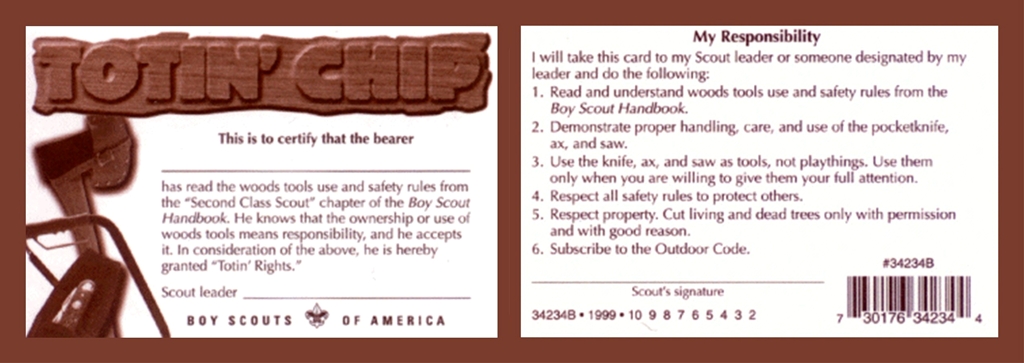
- This was my goal as a Boy Scout to be able to carry or use an edged tool you had to have a Totin' Chip Card similar to this. If you got your corners cut you had to retrain and retest to get another.
- Totin Chip Card 1024.jpg (234.06 KiB) Viewed 928 times
Youth: Proper training as in programs like the BSA's Totin' Chip Card. If you were guilty of doing something outside the rules you got a corner cut off. If you got all four corners cut you would not be able to use/carry a knife/axe/saw. Most circumstances were met with retraining and retesting phase that could get a new card and renew your ability to carry/use edged devices again.
Two very graphic terms used while doing this research:
"Blood Circle" The radius around the individual using an edged tool, at arms length + length of tool/blade, that is considered "working space." No one should be within "the blood circle" for safety.
- The
"axe yard" is determined by grasping the sheathed axe head and at arms length, plus the length of the axe handle, determining the safe zone for the operation of the axe. This is in keeping with the concept of clearing the "blood circle" but also determining the safe area not only to the left, right, front and rear but also including any of the overhead obstacles that may be present.
"Triangle of Death" The area formed between the thighs and knees when seated where many people make the mistake of using edge tools. The inside of the legs presents the femoral arteries of both legs within this triangle which if severed could cause serious to life threatening injury.
- Consider the natural reaction of any person who might lose their grip on an edged tool. Usually they close their legs and try to stop the item from falling! How will that workout in the triangle of death?
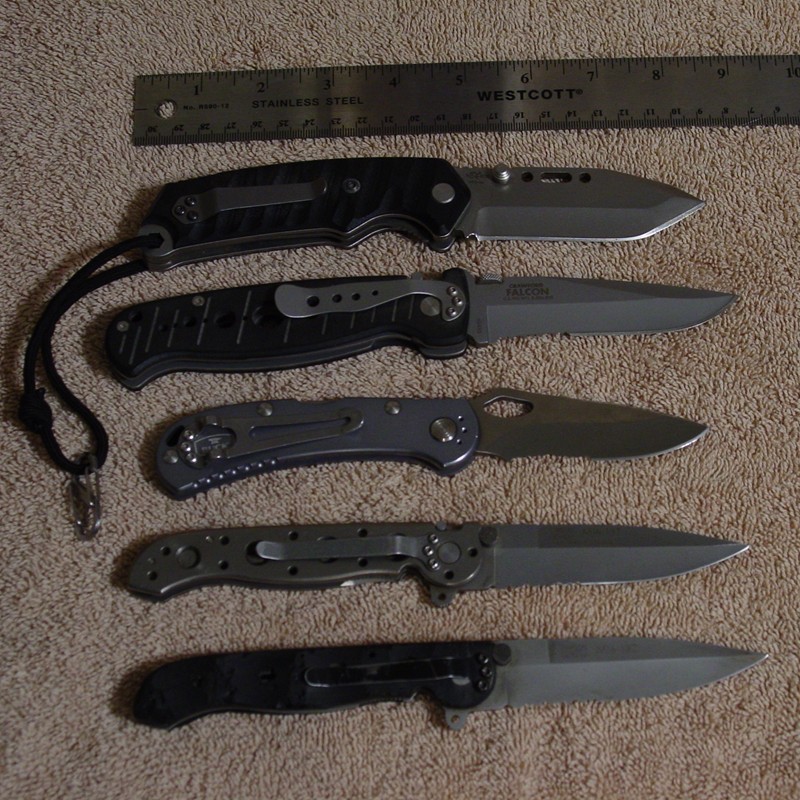
- 1. Folders; lockers specifically.
- Knives 01.JPG (222.85 KiB) Viewed 927 times
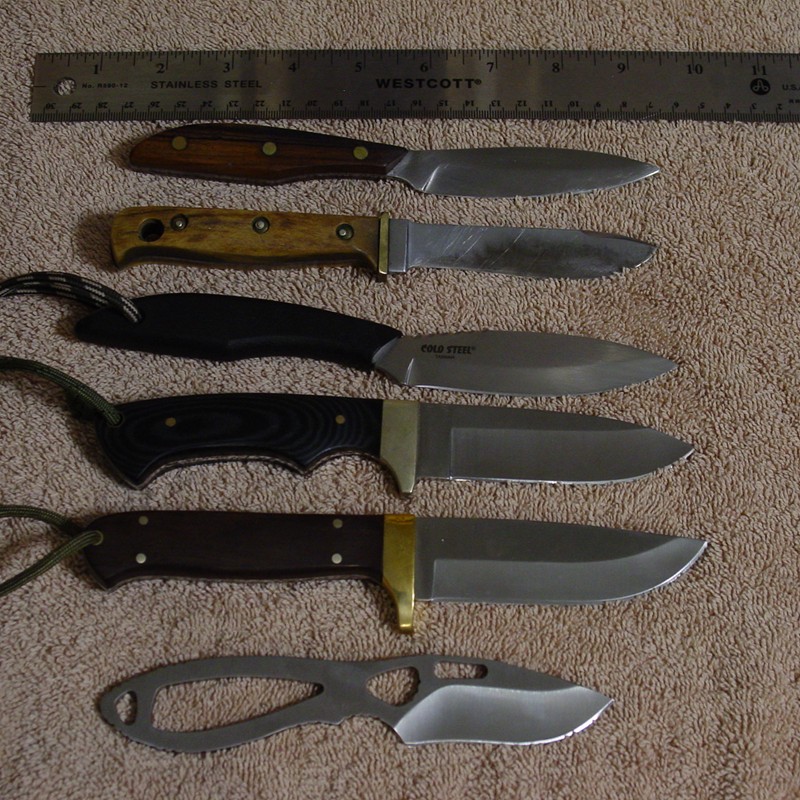
- 2. Fixed blades knives.
- Knives 02.JPG (231.4 KiB) Viewed 927 times
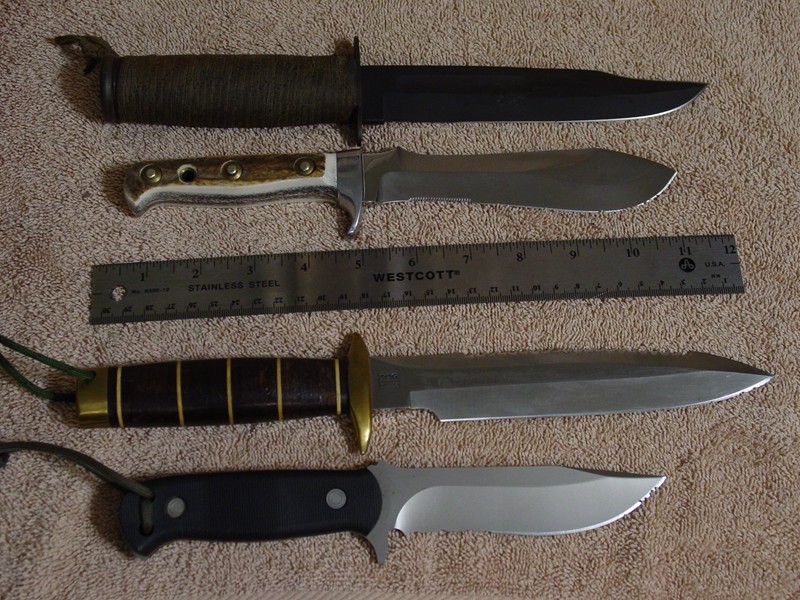
- 3. Large fixed blade knives.
- Knives 03.JPG (190.15 KiB) Viewed 927 times
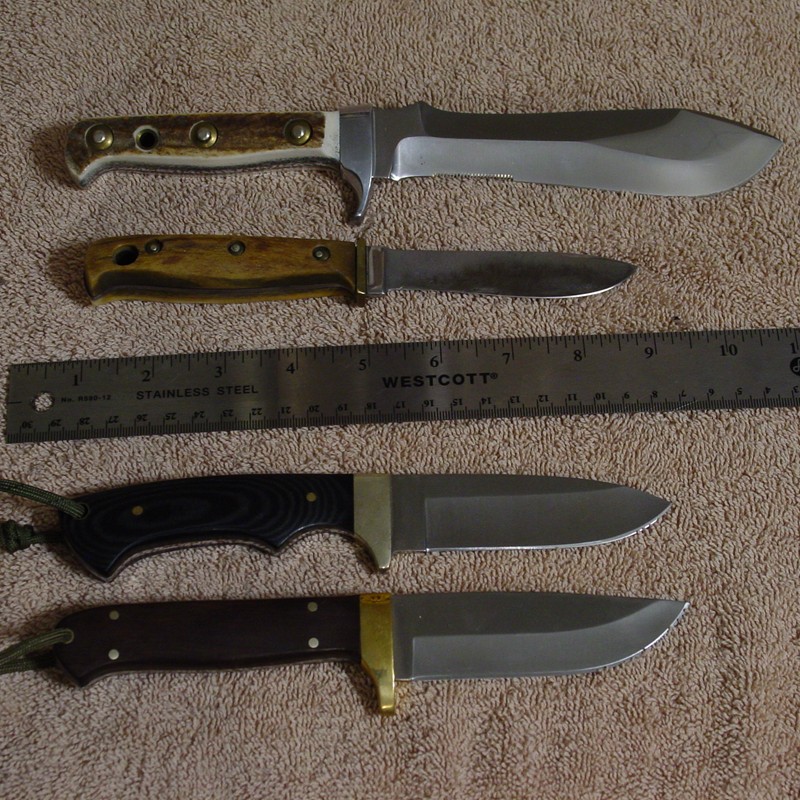
- 4. Puma, then and now.
- Knives 04.JPG (243.02 KiB) Viewed 927 times
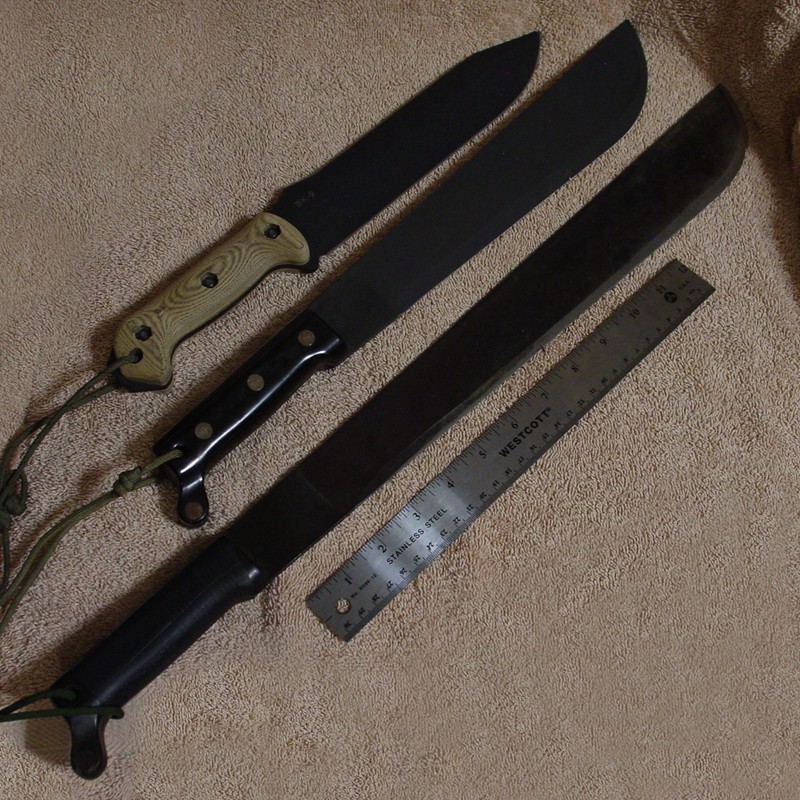
- 5. Machete and heavy blades.
- Knives 05.JPG (241.74 KiB) Viewed 927 times
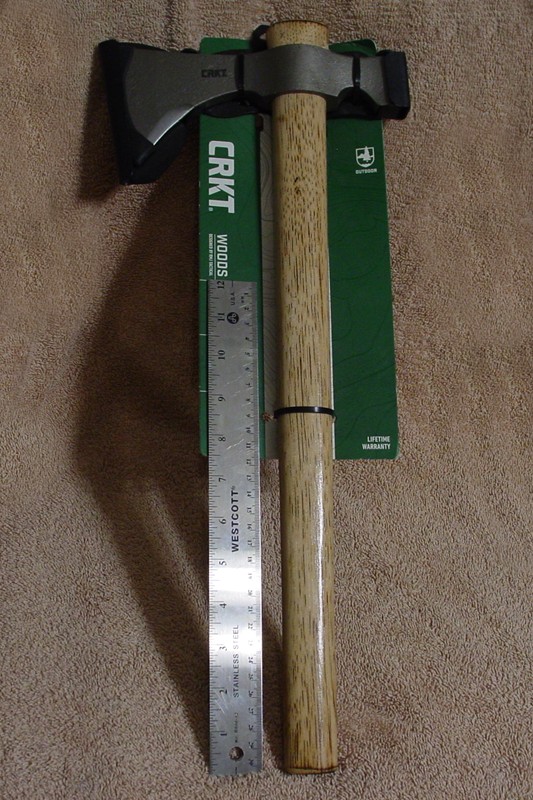
- 6. Hatches and tomahawks have had a resurgence.
- Knives 06.JPG (163.42 KiB) Viewed 927 times
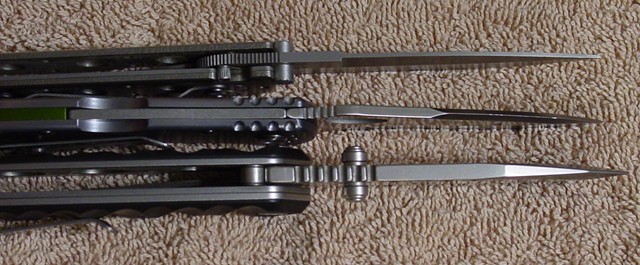
- 8. Thickness = weight. How much bulk/weight are you willing to carry around?
- Knives 08.JPG (86.39 KiB) Viewed 926 times
H-U-A or "Hooah!" = Heard Understood & Acknowledged. In context: "Roger that sir, HUA!"